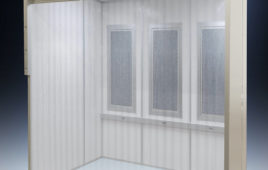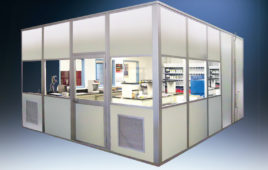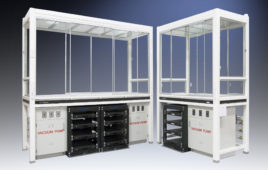
Image: European Space Agency
The copper-colored baffle cover of the European Space Agency’s Characterising Exoplanet Satellite, Cheops, in the cleanroom at Airbus Defence and Space Spain, Madrid.
After completing spacecraft testing, the satellite has passed a very important review that determined it is ready to fly. Cheops will be stored in Madrid for a few months before being shipped to the launch site in Kourou, French Guiana; launch is scheduled in the time slot between Oct. 15 and Nov. 14, 2019. The baffle cover pictured in this image is designed to protect the satellite’s scientific instrument—a powerful camera, or photometer—during assembly and launch. Once in space, the cover will open, allowing light from stars to enter the telescope.
Cheops will make observations of exoplanet-hosting stars to measure small changes in their brightness due to the transit of a planet across the star’s disc, targeting in particular stars hosting planets in the Earth-to-Neptune size range. The information will enable precise measurements of the sizes of the orbiting planets to be made: combined with measurements of the planet masses, this will provide an estimate of their mean density—a first step to characterizing planets outside our Solar System.
Cheops paves the way for the next generation of ESA’s exoplanet satellites, with two further missions— Plato and Ariel—planned for the next decade to tackle different aspects of the evolving field of exoplanet science.




